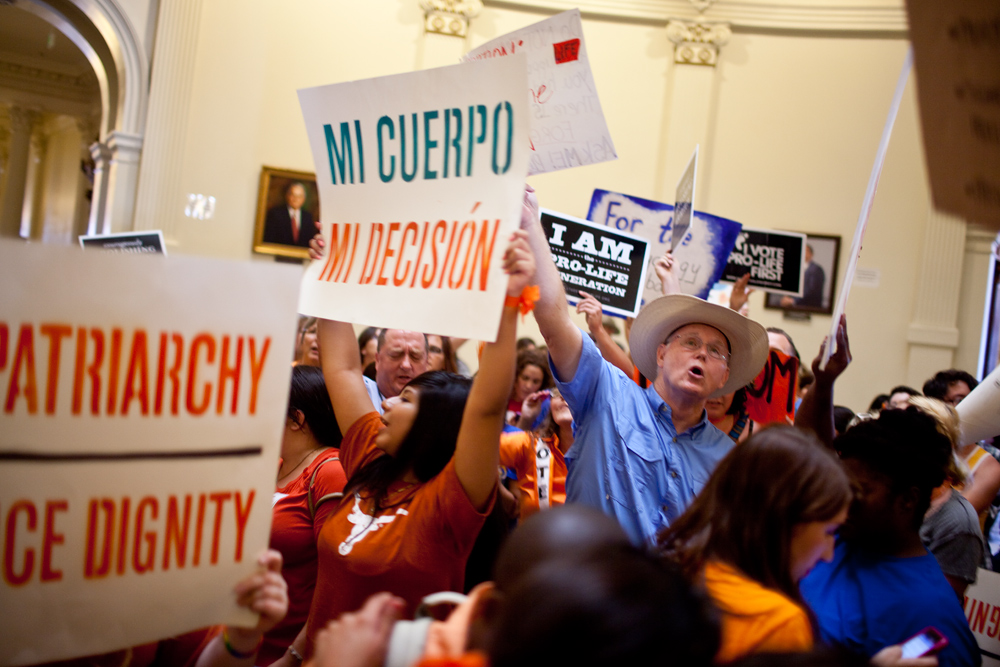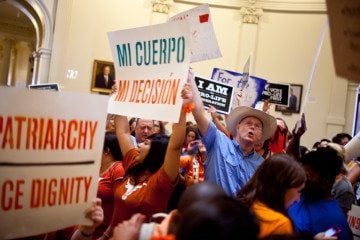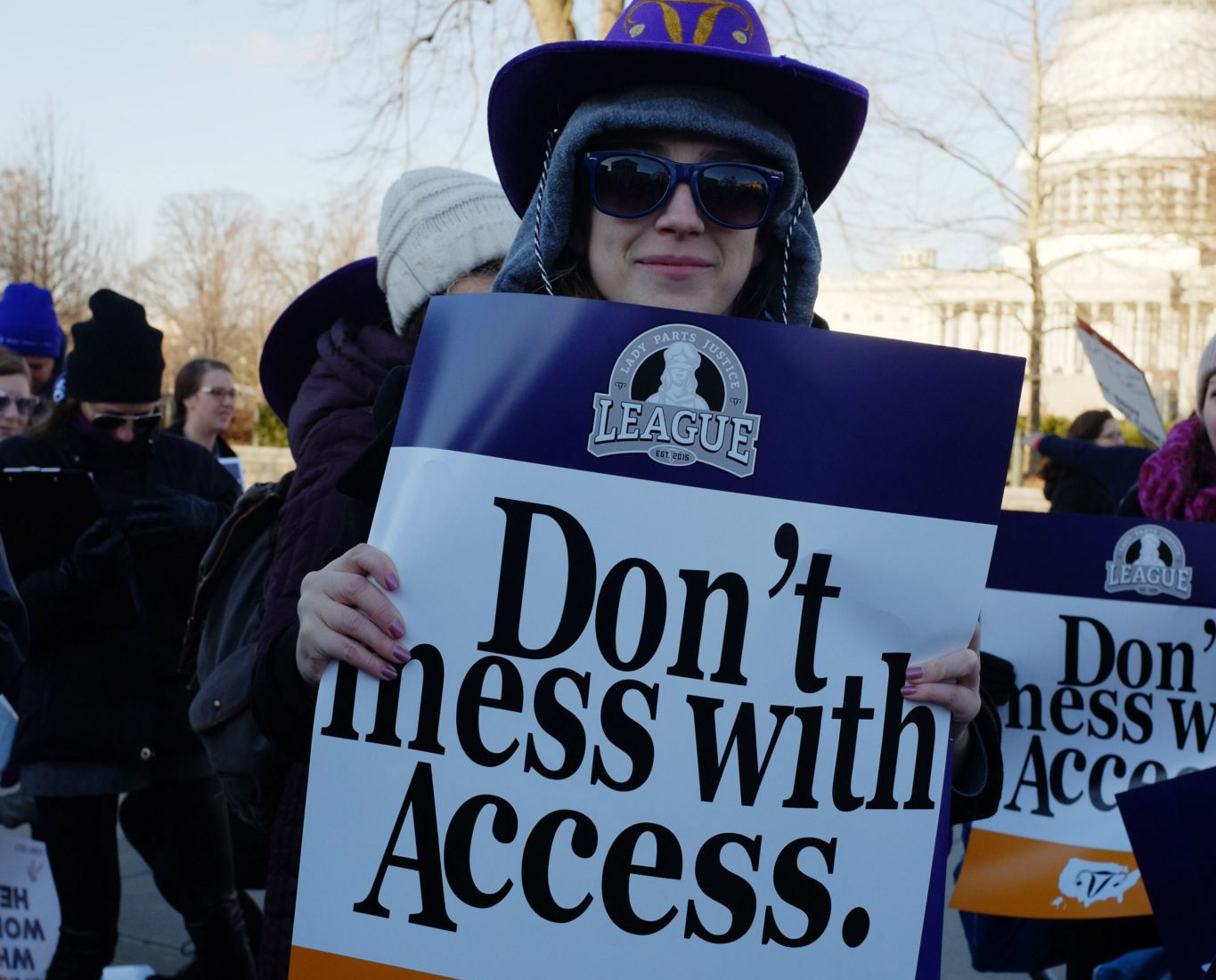
Report: In Texas, Hundreds of Thousands Have Attempted to Self-Induce Abortions


Between 100,000 and 240,000 Texans have attempted to terminate their pregnancies without medical assistance, according to new research released Tuesday. Based on interviews and a statewide survey, the unprecedented study by the Texas Policy Evaluation Project (TxPEP) estimates that between 1.7 and 4.1 percent of Texas women between the ages of 18 and 49 have attempted to end their own pregnancies outside of a clinical setting.
According to TxPEP’s interviews with Texans who’ve attempted self-induction, the top four reasons they tried to end their pregnancies on their own fall into four categories: financial constraints for the cost of the procedure or travel to the nearest clinic, clinic closures, recommendation from a family member or friend, or an intention to avoid shame or stigma of going to an abortion clinic, especially if they had had an abortion before.
“I didn’t have any money to go to San Antonio or Corpus,” one woman living in the lower Rio Grande Valley told researchers. “I didn’t even have any money to get across town. Like I was just dirt broke. I was poor.”
The study also found that Latina women living near the Texas-Mexico border are more likely to have attempted to induce their own abortions, or know someone who has, than non-Latina Texans. In the wake of Texas’ omnibus anti-abortion law, House Bill 2, the lower Rio Grande Valley lost all but one of its licensed abortion clinics. The 2013 law, which is now headed to the U.S. Supreme Court for review, has led to the closure of dozens of clinics statewide and increased patient wait times.
Researchers believe the likelihood of self-induced abortion in Texas is higher than elsewhere. According to a 2008 national study by the Guttmacher Institute, less than 2 percent of American women reported taking something to terminate their pregnancies on their own. In 2012, TxPEP conducted a survey of Texans seeking abortions and found that 7 percent of women interviewed spoke to reported taking something to induce their own abortion.
Lead TxPEP researcher Daniel Grossman, a professor of obstetrics and gynecology at the University of California at San Francisco, warned that clinic closures after HB 2 may lead to an increase in self-inductions.
“This is the latest body of evidence demonstrating the negative implications of laws like HB 2 that pretend to protect women but in reality place them, and particularly women of color and economically disadvantaged women, at significant risk,” Grossman said in a press release. “As clinic-based care becomes harder to access in Texas, we can expect more women to feel that they have no other option and take matters into their own hands.”
The most common method women reported using to induce their own abortion was a medication called misoprostol, also called by its brand name, Cytotec. A smaller number of women reported using ineffective methods such as herbs, teas and vitamins.
“It’s certainly not ideal that women are doing this on their own when they don’t want do this on their own.”
Available only by prescription in the United States, misoprostol — often used to treat ulcers — is sold over the counter at Mexican pharmacies just across the Texas-Mexico border. According to the World Health Organization, misoprostol can be effective in ending a pregnancy, but the risk of complications or an incomplete abortion goes up without accurate information about dosage and appropriate use, Grossman said.
“It’s certainly not ideal that women are doing this on their own when they don’t want do this on their own,” he said. “From a human rights perspective, women should be able to have access to the highest quality of health care.”
Among some reproductive and abortion rights organizations in the United States, the conversation around the use of misoprostol is one of empowerment. But of the women TxPEP interviewed who used the medication, Grossman said all of them would have preferred to get an abortion in a clinical setting.
Amy Hagstrom Miller, founder and CEO of Whole Woman’s Health and lead plaintiff in the legal challenge to HB 2, said that in Texas, where safe and legal abortion clinics are becoming increasingly rare, patients should not be forced into a potentially harmful situation.
“We need to put ourselves in the shoes of people in poverty, who are out of reach of health care,” she said. “I think misoprostol is a tremendous resource to us for harm reduction, or where abortion is out of reach [such as Ireland or Mexico]. But in the United States, [abortion is] legal and women should be able to make a choice to go to a clinic, or make a choice, if they’re interested, in another approach, and not be forced to.”
“When abortion is stigmatized, not covered by insurance and/or regulated out of existence, some women will take abortion into their own hands.”
“When abortion is stigmatized, not covered by insurance and/or regulated out of existence, some women will take abortion into their own hands,” said Ana Rodriguez Defrates, Texas policy and advocacy director with the National Latina Institute for Reproductive Health.
Latina women make up roughly 40 percent of all women living in Texas and are often disproportionately impacted by statewide restrictions, including family planning budget cuts and anti-abortion laws, Defrates said. In her work with communities along the Texas-Mexico border, Defrates said women often don’t know where to turn for health care.
“No woman should feel like she has no choices,” she said.


